
Growing Tomatoes: Common Mistakes to Avoid as a Beginner
Published: 28/04/2025 | Updated: 28/04/2025
Key Highlights
-
Tomatoes thrive in full sun and require consistent care for optimal growth.


-
Avoid overwatering or underwatering to prevent stress on your tomato plants.
-
Select disease-resistant varieties to minimize gardening challenges.
-
Ensure proper spacing and staking to boost air circulation.
-
Nutritional needs vary; monitor foliage health to prevent over-fertilization.
-
Harvest mature green tomatoes correctly to enjoy the full flavor without spoiling freshness.
Learning these basics will help you avoid common pitfalls and ensure a successful tomato gardening experience.
Introduction
Tomatoes are a common choice for many home gardens. People enjoy using them in everything from fresh salads to tasty sauces. Whether you are taking care of green tomatoes or looking forward to ripe tomatoes, it's important to care for your plants the right way. Many new gardeners don’t realize how much work it takes to manage sunlight, water, and pests. By learning the basics and recognizing typical mistakes, beginners can prepare for a successful tomato harvest season.
Popular Varieties of Tomatoes
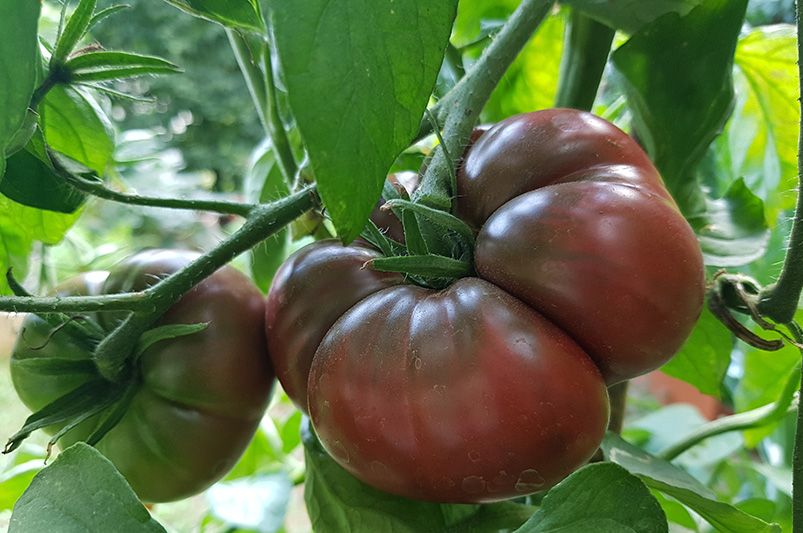
Heirloom Classic Tomato
The Heirloom Classic Tomato is a timeless favorite cherished for its rich, robust flavor and old-fashioned charm. Known for its large, juicy fruits and vibrant colors ranging from deep red to golden hues, this tomato variety offers exceptional taste that's perfect for slicing, salads, and homemade sauces. Grown from seeds passed down through generations, Heirloom Classics are celebrated for their superior texture, complex flavor profile, and natural resilience. Ideal for garden beds, raised planters, or patio containers, these tomatoes thrive in sunny spots with well-draining soil and reward gardeners with a truly authentic farm-to-table experience.
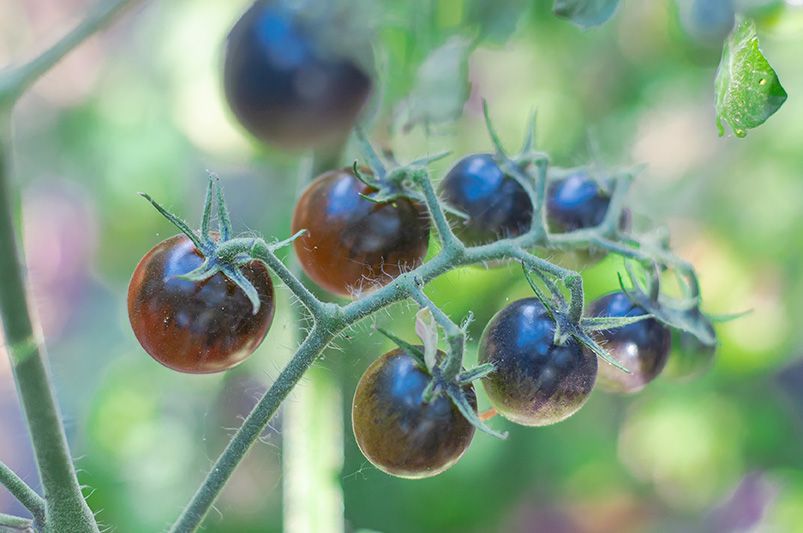
Midnight Snack Tomato
Add a little magic to your garden with the Midnight Snack Tomato! This eye-catching cherry tomato starts off green, deepens to a rich purple-black, and finishes with a pop of red when fully ripe. Bursting with sweet, juicy flavor and loaded with antioxidants, it’s the perfect healthy snack you can pluck straight from the vine. Easy to grow and highly productive, the Midnight Snack thrives in sunny spots and looks stunning in garden beds, pots, or patio planters. Whether you’re building a colorful salad or just craving a tasty treat, this unique tomato brings both beauty and bold flavor to your backyard.
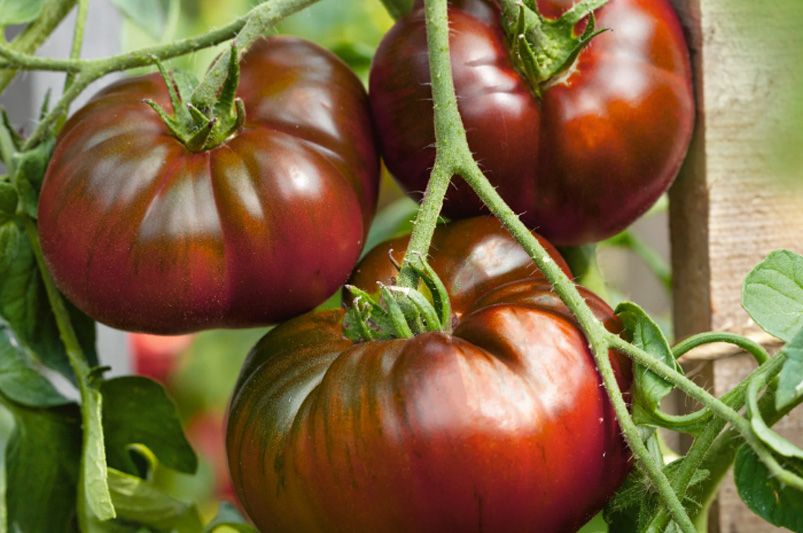
Paul Robeson Tomato
The Paul Robeson Tomato is a legendary heirloom variety celebrated for its rich, smoky-sweet flavor and dramatic appearance. With its deep mahogany skin and juicy, dark red flesh, this tomato brings gourmet taste and bold color to your garden. Named after the famous singer and activist Paul Robeson, this variety thrives in warm, sunny conditions and produces medium to large fruits perfect for slicing, sandwiches, and fresh salads. Known for its complex, earthy flavor profile, the Paul Robeson Tomato is a must-grow for gardeners and food lovers looking to add something truly special to their summer harvest.
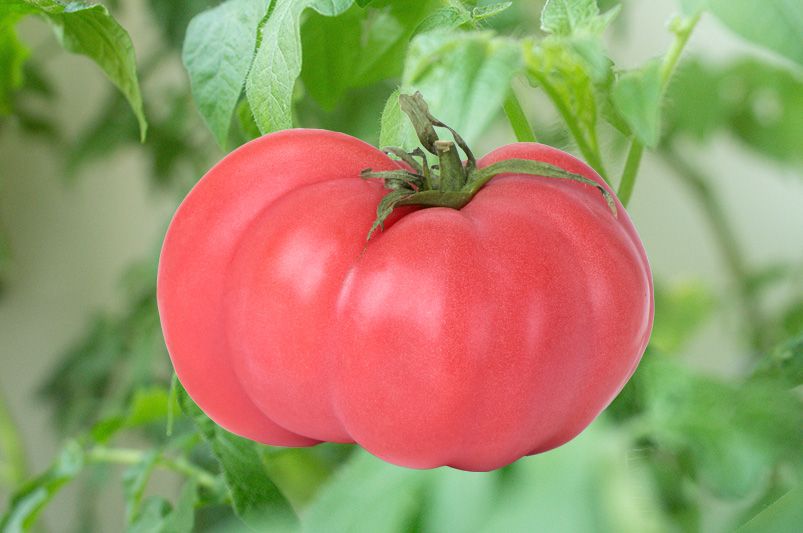
Pink Brandywine Tomato
The Pink Brandywine Tomato is a beloved heirloom classic, prized for its enormous fruits and unforgettable, rich flavor. With its rosy-pink skin, creamy texture, and old-fashioned sweetness, this variety delivers a true farmstand taste experience. Perfect for slicing onto sandwiches, layering in caprese salads, or simply enjoying with a sprinkle of salt, the Pink Brandywine is a showstopper both in the garden and on the plate. This vigorous grower thrives in full sun and rewards patient gardeners with large harvests of juicy, deeply flavorful tomatoes that embody the very best of summer.
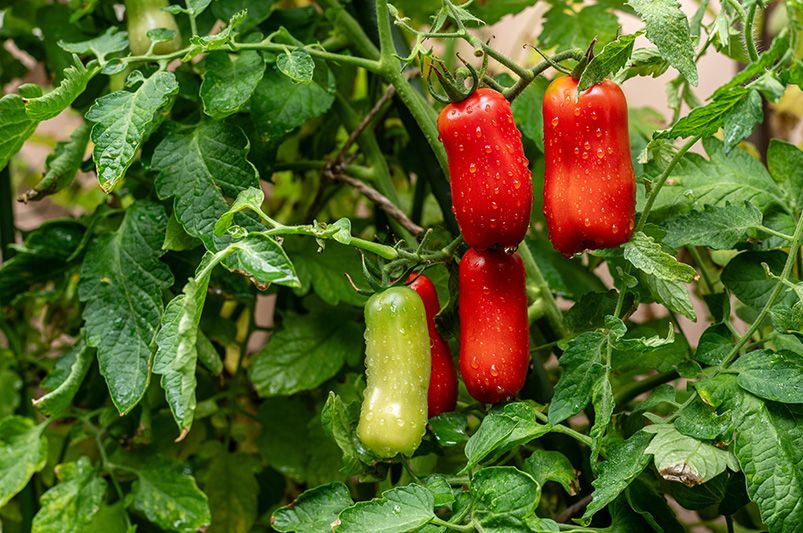
San Marzano Tomato
The San Marzano Tomato is a legendary Italian heirloom treasured for its rich, sweet flavor and low acidity, making it the gold standard for sauces, pastes, and gourmet cooking. These slender, deep red fruits have a thick, meaty texture with fewer seeds than typical tomatoes, resulting in a smooth, luxurious consistency when cooked. Grown in sunny gardens or containers, San Marzano plants are vigorous and highly productive, offering a steady harvest perfect for homemade marinara, pizza sauces, and fresh dishes. If you’re serious about your cooking — or just love an exceptional tomato — San Marzano is a must-have for your garden.
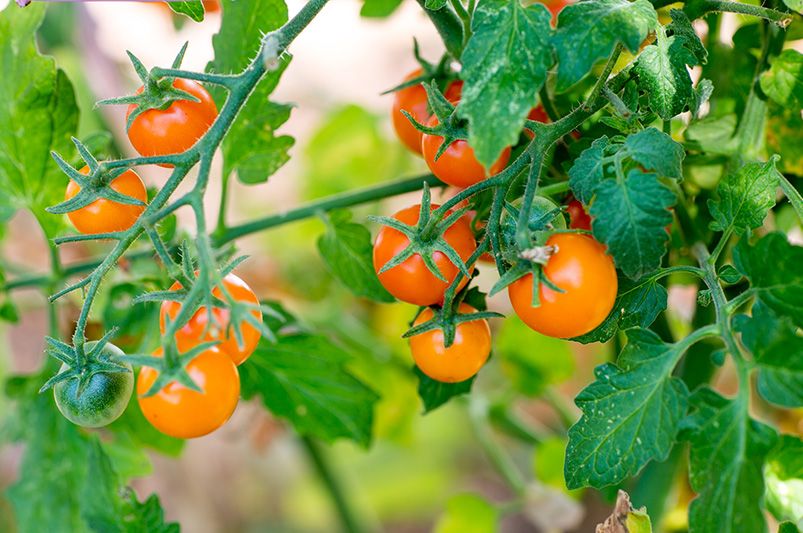
Sungold Tomato
The Sungold Tomato is a garden favorite, known for its unbelievably sweet, tropical-like flavor and vibrant golden-orange color. These cherry-sized tomatoes are bursting with juicy goodness, making them perfect for snacking right off the vine, tossing into salads, or brightening up any dish with a splash of color. Fast-growing and incredibly productive, Sungold plants thrive in full sun and reward gardeners with abundant clusters of fruit all season long. If you’re looking for a tomato that's as fun to grow as it is to eat, the Sungold is a must-have addition to any backyard garden.
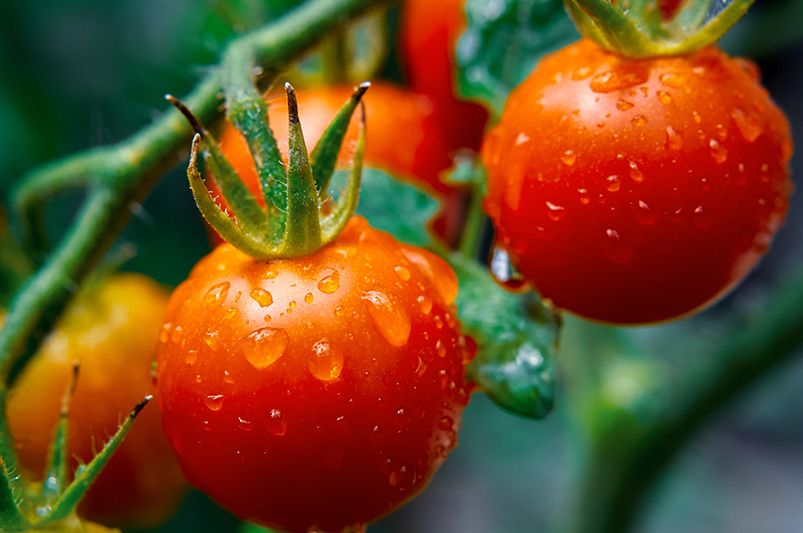
Sweet 100 Tomato
The Sweet 100 Tomato lives up to its name, delivering hundreds of bite-sized, candy-sweet cherry tomatoes throughout the season. These vibrant, bright red fruits grow in long, cascading clusters, offering a nonstop harvest perfect for snacking, salads, and fresh garden platters. Known for their intense sweetness and juicy texture, Sweet 100s are a favorite among gardeners who love a heavy producer with unbeatable flavor. Thriving in full sun with a little support from stakes or cages, this vigorous grower promises a summer filled with irresistible, homegrown treats.
Preparing to Plant Your Tomatoes
Proper preparation is the key to a successful tomato gardening experience. If you are a beginner, start by getting the right supplies. You should also pick a planting method that matches your time and gardening goals. You can grow tomato plants from seeds or seedlings. Each method has its own benefits.
It's also very important to place your tomato plants correctly. Choose a spot that gets lots of sun and drains well. This helps the plants grow healthy during the growing season. Make sure to avoid common mistakes like planting them before the danger of frost or ignoring the quality of the soil for the best results.
Necessary Equipment and Resources
Garden centers are great places to find the right tools and help for growing tomatoes. They have many choices like tomato seeds, seedlings, planting pots, fertilizers, and gardening tools just for you.
If you are a beginner, starting with tomato seedlings is a good idea. Seedlings need less time and work than seeds. You won’t need extra gear like seed trays. Still, garden centers might have a limited selection of special types.
If you want to grow tomatoes from seeds, you need seed starter trays and grow lights. Make sure you have space indoors for gardening. Many skilled gardeners like this way to grow certain varieties or to be eco-friendly. Using these tools along with your gardening skills will help you pick the best equipment for your tomato growing journey.
Selecting the Right Planting Location
Tomatoes grow best in full sun. They need at least six hours of direct sunlight every day. In cooler areas, try to give them eight hours to help their growing season. In hot places, they may need some shade in the afternoon to stay healthy.
Find a spot with rich, well-drained soil. This helps the plants develop healthy root systems. Do not plant tomatoes where other nightshade crops were grown recently. Diseases may still be in the soil. Remember to rotate your crops to prevent pests and diseases.
Before you plant, check your soil level and make any necessary changes. Testing the acidity in the soil can also help your garden grow well. Make sure the conditions, like early summer warmth or late spring chill, match your planting plans for the best results.
Step-by-Step Guide to Planting Tomatoes
Planting tomato plants can feel tricky at first, but making it simple helps a lot. Start by preparing and testing your soil. Then, plant your seeds or tomato seedlings carefully.
Water your plants regularly and make sure to fertilize them on time. Keep an eye on them to help them grow well. Each step, like adding mulch and setting up supports, matters for their long-term growth. This guide will cover the important details to help beginners feel good about growing strong tomatoes during their growing season.
Step 1: Soil Preparation and Testing
Healthy soil helps tomato plants grow better. It creates a space full of nutrients. Test your soil for pH levels. Aim for slightly acidic or neutral ranges to help your tomato transplants thrive.
Before you transplant in early summer, mix in some organic matter, such as compost or aged manure. This adds extra nourishment to the soil. Manure provides micro-nutrients that support heavy feeders like tomatoes.
Make sure the soil can hold the right amount of moisture. Don’t plant in very wet or very dry areas, as this can shock the roots. Well-prepared soil can help prevent diseases like verticillium wilt and alternaria stem canker. This way, your tomatoes can grow strong throughout the season.
Step 2: Planting Seeds or Seedlings
Tomato seedlings are a great choice for beginners who want to start gardening. Using transplants means you can spend less time on hard work. This lets you focus on caring for your plants. Check out local garden centers or farmers' markets to find good varieties.
If you decide to plant seeds, make sure to time it right with the last frost date. Starting seeds will give you more flexibility and access to unique types. However, it does need more resources, patience, and effort.
Whether you are using seedlings or seeds, keep each tomato plant spaced out enough, around 18 to 36 inches apart. This helps with good air circulation and lower chances of fungal diseases. Proper spacing and the right soil depth will support healthy root systems.
Step 3: Watering Techniques
Watering tomatoes the right way keeps their roots happy without making them soggy. Use drip irrigation or soaker hoses to get water right to the soil. This helps keep the leaves dry.
-
Aim for 1-2 inches of water each week in cooler months.
-
Water more often when it’s hot.
-
Water early in the morning to stop too much water from evaporating.
If you're using containers, you might need to water them twice a day in summer. Their soil dries out quicker than soil in garden beds. By sticking to a good watering routine, you can lower problems like blossom end rot and keep your tomato plants healthy.
Step 4: Applying Fertilizers
Tomatoes are heavy feeders. They grow well when they get the right nutrients. Add compost to the holes where you plant them. Also, feed the plants every two weeks with water-soluble fertilizers that are high in phosphorus and potassium.
Watch for signs of stress, like yellow leaves or slow growth. Be careful not to add too much nitrogen. Too much nitrogen can lead to lots of leaves but fewer fruits.
Slowly start using organic options, like bone meal or seaweed-based fertilizer. This helps maintain their health in the long run. Good feeding helps tomatoes resist disease and produce a strong harvest.
Step 5: Regular Monitoring and Care
Taking care of your tomato plants improves the quality of the yield. If you check on them regularly, you can spot diseases like late blight early and treat them quickly.
Make sure to keep your tomato plants on strong supports and trim them to allow for good air circulation. Remove suckers and lower leaves to keep the main stems healthy.
Look for pests often. Some beneficial insects can help control pests naturally. Using mulch helps prevent soil from splashing on the plants. Healthy growth needs your attention all the time. With proper care, your plants will thrive and produce a great harvest.
Common Pitfalls in Tomato Gardening
Gardening mistakes can make beginners feel frustrated, but spotting them can help you improve. Overwatering and underwatering can upset the moisture levels, which is bad for plant health.
If you ignore problems like pests or not staking plants properly, it can lead to diseases. Being aware of these things is important for growing healthy determinate tomatoes or other tomato types. By learning about common mistakes, you can avoid issues and have beautiful garden beds that grow well all season.
Overwatering and Underwatering Issues
Tomato plants can have problems if they don't get the right amount of water. If you give them too much water, the soil becomes wet and the roots can rot. If they don’t get enough water, they can wilt, especially when it is hot. Try to water them regularly at the beginning of the week but make sure not to soak the soil.
Check the moisture in the soil often. It's important to keep the soil evenly moist. Using mulch can help keep the moisture and make the soil conditions better.
Look for signs like drooping leaves or brown spots. These mean there might be a problem with watering. It's good to fix these issues early. By developing a regular watering routine, your tomatoes will grow healthier during their growing season.
Ignoring Pest Control
Neglecting pest control can seriously harm tomato plants. This can lead to less flavor and lower yields. Beneficial insects, like ladybugs, can help keep harmful pests away, such as tomato hornworms.
You should check your plants often for eggs or bugs. It is important to follow good pest management practices. Planting basil or marigolds nearby can keep pests away too.
Try not to depend too much on chemical sprays. Organic options are better for plant health. Learning about pest control helps keep your plants strong against diseases and supports their growth.
Incorrect Staking and Spacing
Tomato plants do not need a lot of support to grow well. Determinate plants need smaller supports, while indeterminate tomatoes need taller stakes or cages.
Make sure to space the plants 18 to 36 inches apart. This helps with airflow and stops diseases from spreading. Proper spacing also keeps the plants safe from damage in strong winds.
Use strong materials, such as concrete reinforcement wire, to guide the vines as they grow. Staking them correctly and giving them enough space can help prevent fungal infections and keep your tomatoes healthy and well-supported.
Harvesting Your Tomatoes
The joy of growing tomatoes ends in a great harvest. When picked carefully, mature green tomatoes have the best flavor.
Storing tomatoes well helps keep their texture, allowing gardeners to try out different tomato sauces or other dishes. From fresh salads to saving crops for winter, using the right way to pick tomatoes is important to keep them fresh for future use.
When and How to Harvest for Optimal Flavor
Check the ripeness based on the type of tomato. Cherry tomatoes are ready when they have full color. Beefsteak tomatoes should be squeezed gently to feel if they are firm.
Pick mature green tomatoes near the end of your growing season. They will ripen more in storage, but be careful not to bruise them.
Don't harvest when it is wet. It's best to pick tomatoes on dry mornings. Good timing helps your vegetable garden produce tomatoes that have a great texture and rich flavor.
Storing Tomatoes Properly to Extend Freshness
Storing fresh tomatoes at room temperature helps prevent spoilage. You can use fully ripe tomatoes in salads. Slightly underripe ones work better in cooking.
If you want to keep tomatoes longer, freeze them or vacuum-seal those picked late in the season. Another way is to wrap them loosely in newspaper and place them in a dark area for more ripening.
Do not put tomatoes in the fridge. The colder temperature can reduce their sweetness and vitamin C. Good storage methods help you enjoy your tomatoes all year long.
Conclusion
In summary, growing tomatoes can be a great experience. It gives you joy and tasty rewards. If you know the common mistakes beginners make, like watering too much or not controlling pests well, you can succeed in tomato gardening. Make sure to prepare well, check your plants often, and pick them at the correct time for the best flavor. With patience and practice, you can grow healthy tomatoes that keep your body well and improve your gardening skills. If you liked this guide, please share it on social media and connect with other gardening fans who would find this helpful! Happy gardening!
Frequently Asked Questions
How often should tomatoes be watered?
Tomato plants need a lot of water during the growing season, especially in hot areas. To keep the soil moist, water them deeply in the early morning. The nighttime air temperatures and the condition of growth will affect how much time the plants need to take in water. This is important for good growth and helps to prevent problems like blossom end rot.
What are the signs of over-fertilization in tomatoes?
Heavy feeders, such as tomato varieties, can show signs like too much leaf growth and fewer flowers if they get too much nitrogen. You might notice pale leaves or weak stems as signs. The best way to fertilize your tomatoes is to use a balanced fertilizer that is rich in phosphorus. This is a good idea for any gardener who wants high yields.
Looking to incorporate a vegetable garden into your landscape design?
At ShrubHub, we make it easy to blend beauty and function by seamlessly integrating a thriving vegetable garden into your outdoor space. Whether you want a dedicated garden bed, raised planters, or edible plants woven throughout your landscape, our expert designers can create a custom plan that fits your style, space, and lifestyle. From selecting the best veggies for your climate to designing layouts that maximize both yield and curb appeal, we're here to help you grow a garden that's as practical as it is beautiful. Let's bring your edible landscape vision to life!


